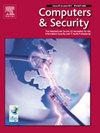Industrial internet of things fortify: multi-domain feature learning framework with deepdetectnet++ for improved intrusion detection
IF 4.8
2区 计算机科学
Q1 COMPUTER SCIENCE, INFORMATION SYSTEMS
引用次数: 0
Abstract
The Internet of Things (IoT) connects more devices that have low user intervention requirements and can converse with each other. Intelligent Transportation (IoT) is a fast-growing field in computer science, but it's also vulnerable to various types of assaults due to the increasingly dangerous nature of the Internet. To secure IoT networks, the DeepDetectNet++ framework is proposed to identify and detect intrusions in IIoT systems and strengthen the IIoT system's security. The need for this research is informed by the fact that Intelligent Transportation IoT systems are becoming more exposed to complex cyberattacks that endanger the core functions of the systems. The goal is to design and implement a new generation intrusion detection system, DeepDetectNet++, that combines hybrid optimization and improved deep learning algorithms to increase the accuracy, sensitivity, and effectiveness of IIoT attack identification and categorization. Two IIoT datasets are used and they are preprocessed using outliers detection and missing values handling techniques. Moreover, the feature extraction phase extracts temporal features, flow-based features, and frequency domain features. A hybrid optimization strategy such as the Hybrid Pelican and Dragonfly Optimization (HPDF) technique is employed in the feature selection to identify the most discriminative features. Finally, a DeepDetectNet++ model is proposed to improve SKA-ResNet's model and Spatiotemporal Self-Attention (STSA)-Based LSTNet component to enhance the detection and classification performance of the developed model. The experimental results of the designed technique are validated with existing models and the developed model gained an accuracy of 98.3%, sensitivity of 97.75%, and F-measure of 98.3%. The developed model detects and classifies IIoT attacks accurately and with high efficiency.
工业物联网强化:基于deepdetectnet++的多领域特征学习框架,用于改进入侵检测
物联网(IoT)连接了更多的设备,这些设备对用户的干预要求较低,并且可以相互交谈。智能交通(IoT)是计算机科学中一个快速发展的领域,但由于互联网日益危险的性质,它也容易受到各种类型的攻击。为了确保物联网网络的安全,提出了deepdetectnet++框架来识别和检测IIoT系统中的入侵,并加强IIoT系统的安全性。由于智能交通物联网系统越来越容易受到复杂的网络攻击,从而危及系统的核心功能,因此需要进行这项研究。目标是设计和实现新一代入侵检测系统deepdetectnet++,该系统结合了混合优化和改进的深度学习算法,以提高工业物联网攻击识别和分类的准确性、灵敏度和有效性。使用两个工业物联网数据集,并使用异常值检测和缺失值处理技术对其进行预处理。此外,特征提取阶段提取时间特征、基于流的特征和频域特征。在特征选择中采用混合优化策略,如混合鹈鹕和蜻蜓优化(HPDF)技术,以识别最具判别性的特征。最后,提出了一个deepdetectnet++模型来改进SKA-ResNet模型和基于时空自注意(spatial - temporal Self-Attention, STSA)的LSTNet组件,以提高所开发模型的检测和分类性能。实验结果表明,所建立的模型精度为98.3%,灵敏度为97.75%,F-measure值为98.3%。该模型能够准确、高效地检测和分类工业物联网攻击。
本文章由计算机程序翻译,如有差异,请以英文原文为准。
求助全文
约1分钟内获得全文
求助全文
来源期刊

Computers & Security
工程技术-计算机:信息系统
CiteScore
12.40
自引率
7.10%
发文量
365
审稿时长
10.7 months
期刊介绍:
Computers & Security is the most respected technical journal in the IT security field. With its high-profile editorial board and informative regular features and columns, the journal is essential reading for IT security professionals around the world.
Computers & Security provides you with a unique blend of leading edge research and sound practical management advice. It is aimed at the professional involved with computer security, audit, control and data integrity in all sectors - industry, commerce and academia. Recognized worldwide as THE primary source of reference for applied research and technical expertise it is your first step to fully secure systems.
 求助内容:
求助内容: 应助结果提醒方式:
应助结果提醒方式:


